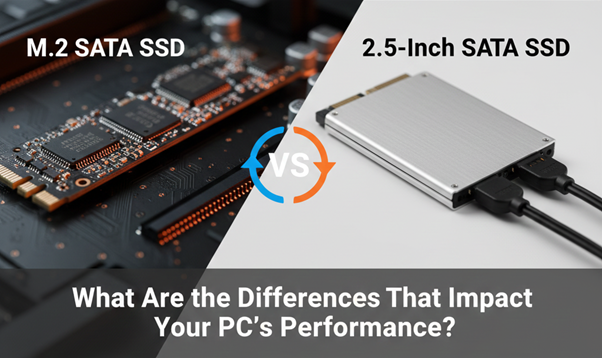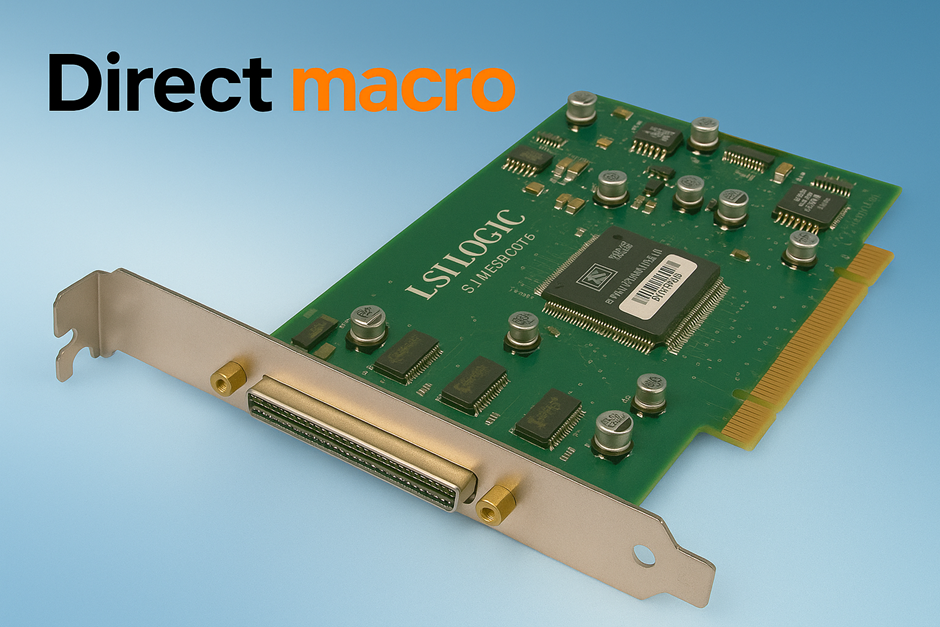What is a CPU? – Understand the Basics of the Central Processing Unit
Welcome to the thrilling world of computing, where the Central Processing Unit (CPU) reigns as the pivotal force in any system, particularly when you’re Building a Gaming PC. Imagine a conductor leading an orchestra; the CPU is the conductor that orchestrates every task your computer performs. From playing games to browsing the web, the CPU controls every action you take on your computer. In this blog, we will dive into the basics of this crucial component and understand what is a CPU?, how it works, what it does, and why it is so important.
What Is a CPU, and How Does It Work?
Every computer has a central processing unit (CPU) that processes information. It is often referred to as the “brain” of the computer as it performs most of the processing and is responsible for executing most of its operations. The CPU is the primary component that performs arithmetic and logical functions, retrieves and runs instructions, and manages data flow in and out of the computer.
The CPU comprises two main components: the arithmetic logic unit (ALU) and the control unit (CU). The control unit gets instructions from memory, decodes them, and then sends the ALU the necessary signals to do the work. The ALU does both mathematical and logical operations, like adding and taking away.
The speed and performance of a CPU are critical factors in determining the overall performance of a computer system. CPU speed is measured in GHz (gigahertz), which measures the number of clock cycles the CPU can execute in one second. The faster the CPU clock speed, the more operations the CPU can perform in a given time frame.
What Does a CPU Look Like
A CPU, or Central Processing Unit, is typically packaged in a rectangular chip called an integrated circuit (IC) mounted on a computer’s motherboard. The physical size of a CPU can vary depending on the type of computer and the specific model. Still, most modern CPUs are relatively small, typically measuring a few centimeters on each side.
The appearance of a CPU can vary depending on the manufacturer and model, but most CPUs have a similar design. Typically, a CPU is a small, flat chip with numerous metallic pins on the bottom that allow it to be inserted into a socket on the motherboard. The top of the CPU is covered with a metallic heat spreader to help dissipate the heat generated by the processor.
Some CPUs also have an integrated graphics processor, which can be identified by a small rectangular section on the chip separate from the central CPU core. Overall, while the design of a CPU can vary, they all serve the same purpose: to process and execute instructions that enable a computer to run various programs and tasks.
Understanding the Major 2 Types of CPUs
There are two major types of CPUs, Intel and AMD, and they are both widely used in desktops, laptops, and servers. Each type has its advantages and disadvantages, and the choice between them ultimately depends on the user’s specific needs and preferences.
Intel CPUs
Intel CPUs are produced by the Intel Corporation and are widely used in desktops, laptops, and servers. Intel has a wide range of CPU product lines that cater to different market segments, including the Core i3, i5, and i7 series for consumers and the Xeon series for servers and workstations. Intel CPUs also tend to have higher clock speeds than their AMD competitor, which can result in faster processing times.
However, Intel CPUs are often more expensive than their AMD competitor and may not offer as many cores or threads as some AMD models. Additionally, Intel CPUs tend to generate more heat than AMD CPUs, which can be an issue in systems with limited cooling.
AMD CPUs
AMD CPUs are produced by Advanced Micro Devices. AMD has a range of CPU product lines, including the Ryzen series for consumers and the EPYC series for servers and workstations.
One of the main advantages of AMD CPUs is their multi-threaded solid performance. This means they excel at tasks requiring multiple cores or threads, such as video rendering or scientific computing.
However, AMD CPUs may offer a different level of single-threaded performance than some Intel models, which can be a disadvantage in tasks that require a single core. Additionally, some AMD CPUs may have lower clock speeds than their Intel counterparts, which can result in slower processing times.
Choosing the Right CPU
When choosing a CPU, several factors must be considered, including performance, price, power consumption, and compatibility. It is essential to carefully evaluate the specific needs of your computer system and choose a CPU that offers the best balance of performance and affordability.
Intel CPUs are generally a good choice for users who require single-threaded solid performance, such as gamers or video editors. AMD CPUs, on the other hand, are a good choice for users who require multi-threaded reliable performance, such as scientific researchers or content creators.
CPU vs. Memory
While the CPU and memory work together to process data and execute programs, they have different functions and limitations. The CPU is responsible for managing instructions and performing calculations, while memory temporarily stores data and programs.
A faster CPU can improve processing times and increase the speed at which programs run. However, a system with insufficient memory can slow down the CPU, as the CPU may have to wait for data to be loaded from the hard drive.
To achieve optimal system performance, it is vital to have a balanced configuration of CPU and memory. This means choosing a CPU that is powerful enough to execute programs and process data quickly while ensuring that the system has enough memory to temporarily store data and programs.
The CPU
The central processing unit (CPU) is the part of the computer that is in charge of carrying out instructions and doing calculations.
When the CPU needs to execute a program or process data, it retrieves the necessary data and instructions from the computer’s memory. The CPU then executes the instructions and processes the data before storing the results back in the memory.
The ALU (Arithmetic Logic Unit), the control unit, and the registers are all important parts of the CPU that help it do these things. The ALU is responsible for performing mathematical calculations and logical operations, while the control unit manages the data flow between the CPU and other components in the system. Registers are small, high-speed memory locations that the CPU uses to store data temporarily.
Memory
Memory, which is also called RAM (Random Access Memory), is a type of memory that temporarily stores data and programs. RAM is used to store information that the CPU needs quick access to. This is different from the hard drive, which keeps information forever.
When a program is launched, the CPU loads the necessary data and instructions from the hard drive into the RAM. The CPU then retrieves the data and instructions from the RAM as needed during program execution.
Memory is measured in gigabytes (GB), and it is one of the most essential things that affects how fast a computer works. Systems with more memory can store more information and run more programs at the same time. This makes the system run faster and work better overall.
FAQs
How many transistors are on a CPU?
The number of transistors on a CPU can vary widely depending on the model and the manufacturing process. However, modern CPUs can contain billions of transistors, which are used to perform logical and arithmetic operations and to control the flow of information within the CPU and between the CPU and other system components.
What does a CPU do for gaming?
The CPU plays a critical role in gaming by processing game instructions, performing calculations, and managing system resources such as memory and graphics. A powerful CPU is essential for high-performance gaming, particularly in games that require a lot of processing power, such as first-person shooters, strategy games, and simulation games.
What Is 2 Core CPU?
A 2-core CPU, also known as a dual-core CPU, is a type of CPU that has two processing units or cores on a single chip. Dual-core CPUs can execute more instructions and perform more calculations simultaneously than single-core CPUs, which improves system performance for multitasking or video editing. Dual-core CPUs can also reduce power consumption and heat generation, resulting in improved laptop battery life and lower cooling requirements for desktop systems.
Is the CPU on the motherboard?
Yes, the CPU is mounted on the motherboard, typically in a socket or slot specifically designed for the CPU model. The CPU is connected to other components on the motherboard, such as the memory, storage, and input/output devices, through a system of buses and controllers.
Final Thoughts
The (CPU) is a crucial computer system component that executes instructions and processes data. CPUs come in various types, including Intel and AMD, and have different features that cater to different market segments. The CPU is typically located on the motherboard of a computer and works in tandem with memory (RAM) to process data and execute programs.
The number of transistors on a CPU can vary, but newer models tend to have more transistors than older models, which enables them to perform more calculations and execute more instructions per second. The CPU’s primary function is to execute instructions and process data, which it does by performing a series of complex calculations and logical operations that manipulate the data in various ways.
For gaming, the CPU plays a crucial role in executing the game’s code and processing data in real-time. Modern games require a CPU with multiple cores and high clock speeds to perform well, and some games require specific CPU features to run correctly. Therefore, it’s important to research the CPU requirements of a game before purchasing it to ensure that your system meets the recommended specifications.
Overall, understanding the basics of CPU is essential for anyone interested in computer hardware and performance. By knowing how CPUs work and what factors affect their performance, users can make informed decisions when purchasing and using computer systems, whether it’s a new or used CPU.
Do you need advice on buying or selling hardware? Fill out the form and we will return.

Sales & Support
(855) 483-7810
We respond within 48 hours on all weekdays
Opening hours
Monday to thursday: 08.30-16.30
Friday: 08.30-15.30








